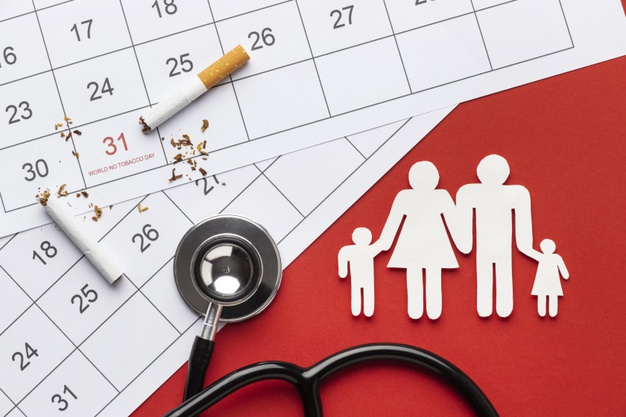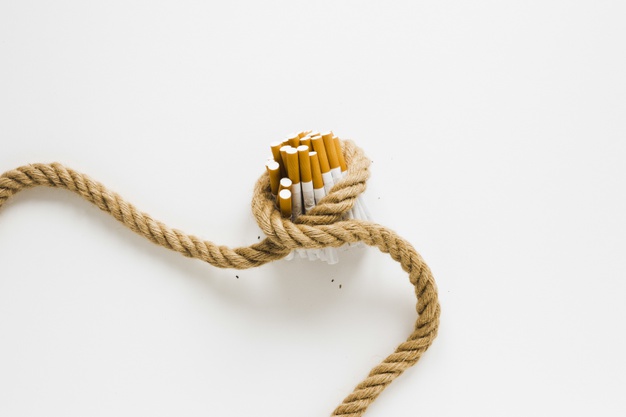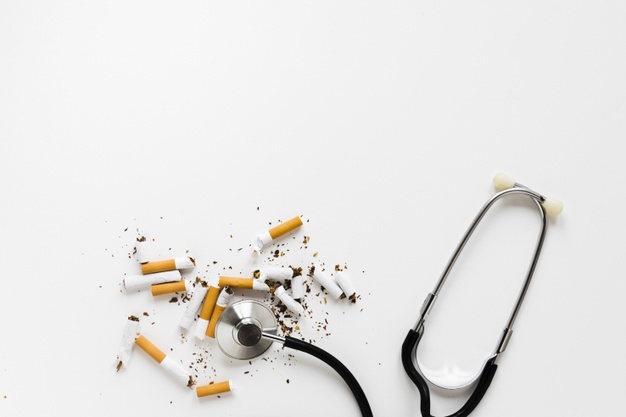When we look at the healthy life behaviors; sufficient and balanced diet, adequate time and regular sleep, coping with stress, regular and adequate exercise, not using tobacco and alcohol, taking responsibility and complying with hygiene conditions are important. Every year 7 million people die due to smoking around the world. 19,100 people die every day in the world due to diseases caused by smoking. Tobacco is one of the most abused substances in the world. Nicotine is the main addictive chemical in tobacco. Smoking, hookah, smoking a pipe or inhaling its smoke creates psychological and physical dependence in the person over time. There are more than 4000 chemicals in tobacco products.

It is estimated that tobacco causes 6 million deaths annually.
Cardiovascular diseases, lung diseases as a result of narrowing of the bronchi, chronic obstructive pulmonary disease, vascular obstruction and related paralysis, gastritis, ulcer and stomach cancer, yellowing of the skin, wrinkles, skin cancer, bad breath and yellowing of the teeth are important health problems.
When you quit smoking; nicotine begins to leave the body in 2 hours, heart rate and blood pressure begin to drop after 6 hours. After 12 hours, the toxic carbon monoxide caused by cigarette smoke is cleared from your bloodstream and makes your lungs work better. After 2 days, your sense of taste and smell will be sharp. Within 2-12 weeks, blood circulation improves, which facilitates physical activities such as walking and running. After 3-9 weeks, problems such as coughing, shortness of breath and wheezing decrease and your lungs become stronger. Within 5 years, the risk of heart attack is cut in half. After 10 years, the risk of lung cancer is halved, while the risk of heart attack falls to the same rate as the risk of a person who has never smoked.

10 steps to quit smoking:
· Determine your quit day,
· Remove all cigarettes, lighters, matches and ashtrays around you
· Set small goals
· Find activities to keep yourself busy
· Brush your teeth and shower frequently
· Pay attention to your diet, drink plenty of water
· Stay away from the factors that will trigger your smoking request
· Prevent smoking cravings by chewing gum or drinking herbal tea
· Get fresh air and move
· If you want to smoke, breathe deeply 10 times
There may be some physical and psychological problems that people may encounter while quitting tobacco. Headaches may occur in the first days of quitting smoking. Dryness or a metallic taste may be felt in the mouth. This is one of the symptoms that the body shows during the tobacco purification period. Situations such as anxiety, restlessness, irritability, decreased heart rate, difficulty focusing, increased appetite and weight gain, sweating, stress and tobacco craving are experienced. People should be prepared for physical and psychological symptoms that may bother them. However, it should be known that this situation is a normal and temporary situation. Quitting smoking can be challenging for most people. The first step in overcoming this challenge is to make some preparations before starting this process. The purpose of medicine is to eliminate nicotine withdrawal that occurs in the process of quitting smoking. These medicines are prescribed by the physician.

When evaluated in terms of preventive health, it is very important that the main target is not to start tobacco and tobacco products at all and especially to protect adolescents from smoking, alcohol and drug, which are considered as risky behaviors in adolescence. Quitting smoking will increase the quality of life of individuals and will be an important healthy lifestyle behavior in the prevention of many chronic diseases and cancers.

 It is estimated that tobacco causes 6 million deaths annually.
It is estimated that tobacco causes 6 million deaths annually.
